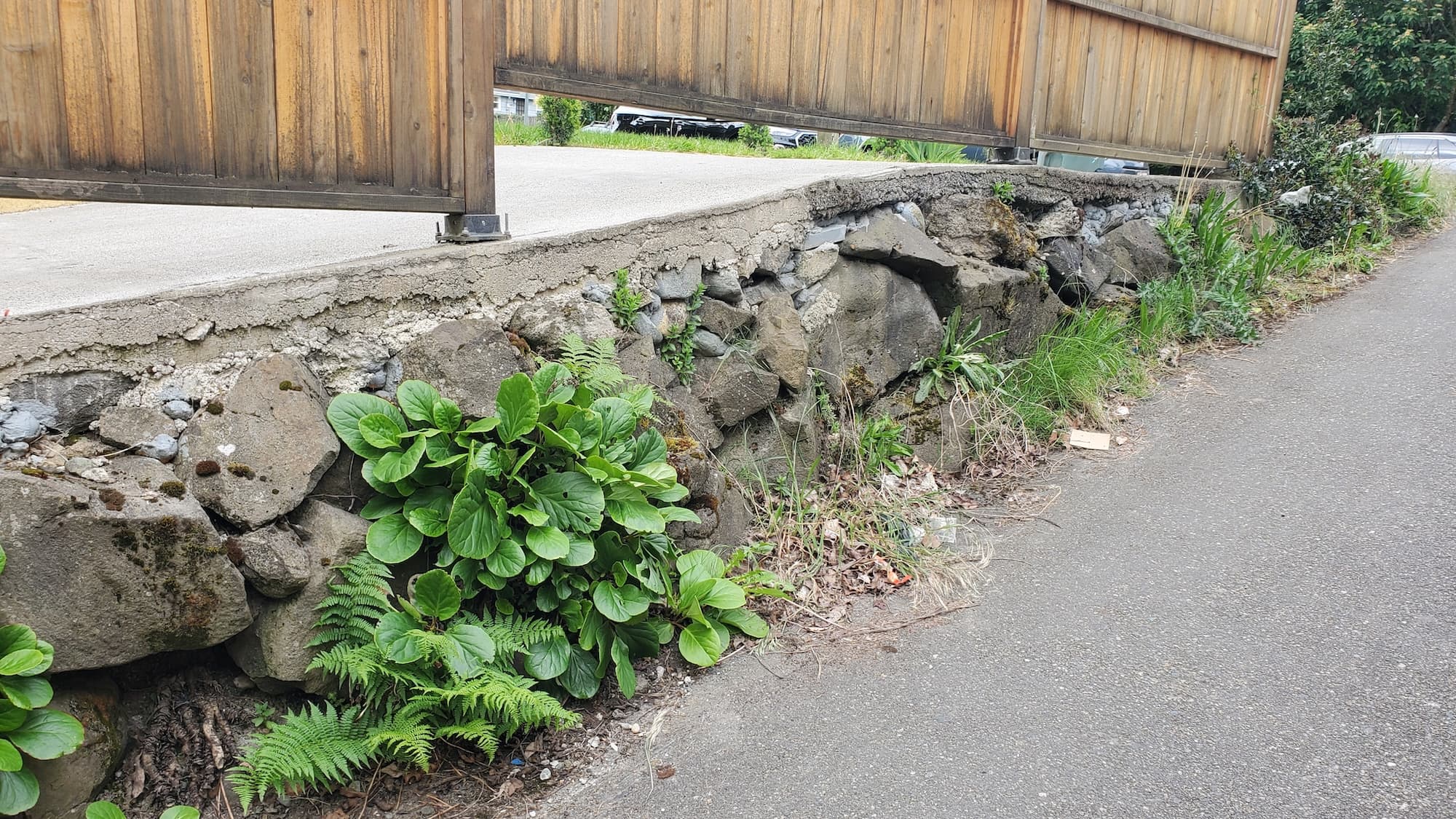West Seattle Remove ivy from walls
Homeowner’s Issue
In West Seattle ivy spreads fast because of our mild, wet winters and long, cool shoulder seasons. Most walls here—cedar siding, older brick, stucco, and mortar—see persistent dampness from winter rains and spring drizzles. North- and east-facing walls around neighborhoods like Admiral and Riverside often stay shaded and stay damp, encouraging ivy to cling, while sunny stretches by Alki and Lincoln Park dry more but still let ivy re-root quickly after summer growth. Steep lots in High Point and Fauntleroy create runoff and pockets of saturated soil where roots hold fast; compacted, slightly acidic soils and moss pressure make manual removal tougher.
Ivy doesn’t just look messy: it traps moisture against siding, wedges into mortar joints, and can hide rot or pests. HOAs and neighbors on tighter lots expect tidy façades; escaped vines can reduce curb appeal and complicate inspections. Because ivy is tenacious, removal in our climate is iterative—single pulls rarely finish the job. Sustainable, herbicide-free methods, root extraction, and follow-up monitoring work best here. We recommend combining physical removal with site-specific replacements—native sword fern, Oregon grape, and low shrubs—to stabilize soil, reduce re-invasion, and keep walls healthy in West Seattle’s unique microclimates.
Our Quality Service
We remove ivy manually and sustainably—no herbicides. Our crew uses pruning saws, loppers, root forks, shovels, hand tools, tarps, and wheelbarrows to cut, peel, and extract vines and roots carefully to avoid damaging siding or masonry. For tall walls or steep slopes we bring ladders and safety gear; for difficult access we use rope harnesses or sectional scaffolding.
Typical timelines: a single small wall (driveway/yard side) is often done in 2–4 hours; larger façades or multi-side jobs take a day or more. Follow-up visits are scheduled at 3–6 month intervals to catch regrowth. We time work for drier windows—late summer to early fall is ideal in West Seattle—so roots pull cleaner and cleanup is easier.
Benefits: improved curb appeal, reduced moisture and pest risk, safer exteriors, and a low-maintenance outcome when paired with native replanting and mulch.
What’s Included
- Site assessment and written plan noting wall material and access.
- Manual cutting of vines at the base and careful peeling from walls.
- Root extraction at the soil line to reduce regrowth.
- Full debris collection and disposal (green waste or haul-away).
- Basic wall inspection for obvious damage; we flag repairs but do not perform major masonry work.
Options / Upgrades:
- Mulch + landscape fabric where appropriate to suppress roots.
- Organic solarization for stubborn mats (tarp heat treatment).
- Planting alternatives: sword fern, Oregon grape, salal, low shrubs.
- Root barrier installation along retaining edges.
- Haul-away vs. curbside green-bin service.
Before & After / Expectations
Expect some noise and physical activity on service day—cutting, hauling, and bagging. Ivy removal can reveal staining, root scars, or minor mortar gaps; these are documented and can be quoted separately for repair. Some fine roots remain and will sprout; plan on 1–2 follow-up checks in the first year. We leave the area tidy: tarps used to capture debris, all green waste hauled or prepped for pickup per your choice.
West Seattle care tips:
- Replant within 2–4 weeks to reduce bare-soil weed pressure.
- Water new native plantings through the first dry summer; afterwards they need far less irrigation.
- Watch for spring and fall spikes in regrowth; schedule maintenance then.
- Moss thrives in compacted, shady spots—improve airflow, add mulch or gravel, and avoid overwatering.
FAQs
Q: Do you use herbicides to kill ivy?
A: No. We use manual removal, root extraction, solarization, and other non-chemical methods only.
Q: When is best to schedule in West Seattle?
A: Late summer to early fall is best for cleaner root pulls; spring is OK for follow-ups. We avoid heavy rain days when possible.
Q: Will removal damage my wall?
A: We work to avoid damage. Removing dense, old ivy can expose existing issues; we document and recommend repair options but we don’t assume hidden repairs are required.
Q: How long before ivy returns?
A: If roots are fully removed and the site is replanted or mulched, re-invasion slows significantly. Expect a need for a touch-up within 6–12 months in heavy-infestation spots.
Q: Do you handle steep slopes or tight access?
A: Yes. We bring ladders, harnesses, and extra crew for steep lots common in Fauntleroy and High Point.
Call to Action
West Seattle homeowners: book an inspection and get a clear, no-surprise estimate. We schedule local jobs quickly and offer sustainable, effective ivy control with native replacement options. Trusted local crew—licensed & insured.
Email: neatandtidyseattle@gmail.com
Phone: 206-538-9344
Mon–Sun: 9am–6pm
Licensed • Bonded • Insured










